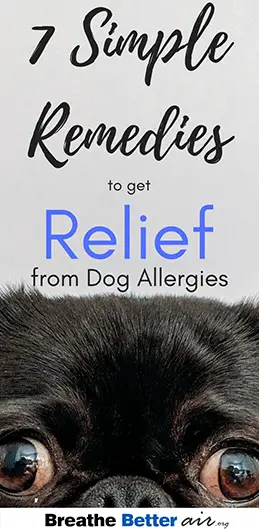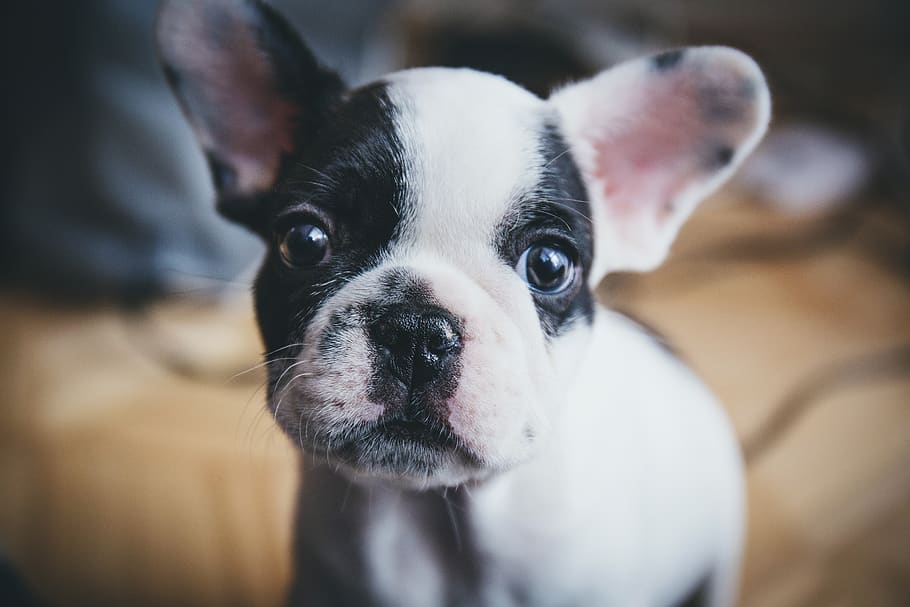They say that dogs are man’s best friend. They certainly can be, but allergic reactions to dogs are hardly fun. While allergies can be treated with medication, these medications sometimes cause adverse side effects such as drowsiness.
The good news is that you can control your allergy symptoms using natural means.
Here are 7 simple remedies to get rid of dog allergies.

1. Apple Cider Vinegar
Apple cider vinegar is slowly becoming more popular, and has never been more accessible. One of the best ways to start your day is with a glass of water mixed with a teaspoon of apple cider vinegar and fresh lemon juice. It can also be used alongside a neti pot to flush your sinuses and eliminate any dog dander stuck where it shouldn’t be.
2. Quercetin
Quercetin can be found naturally in plant foods including cruciferous vegetables, onions, citrus fruits, and green tea. It is a natural bioflavonoid that stabilises histamine secretion and helps the body to natural control allergic reactions. Studies have shown that it calms down the hyperactivity of airways, which is one reason it is so effective. It’s recommended to use quercetin over the long term as it can take a few months for it to work properly.
 3. Neti Pot
3. Neti Pot
Neti pots provide natural relief for allergies by cleaning out the sinuses and eliminating congestion and allergens. Neti pots have been shown to improve the quality of life for people with respiratory illnesses with little to no side effects. This kind of “sinus irrigation” for removing allergens and other irritants was started hundreds of years ago as part of Ayurvedic traditional medicine. It has been used for centuries in India and has now made its way to the west. If using a neti pot, then be sure to use distilled and sterile water. Tap water can actually make your sinus problems worse because it has chlorine in it.
4. Stinging Nettle
The medicinal use of stinging nettle can be traced all the way back to Medieval Europe, where it was used to relieve fluid retention and joint pain. The University of Maryland Medical Center suggests that stinging nettle can be used to treat a variety of health problems including allergies. Stinging nettle has been shown to naturally control histamines. It can be taken as a tincture or in tea form.
5. Eucalyptus Oil and Frankincense Oil
Essential oils have been shown to work well for allergies, including pet allergies. They work by detoxifying microorganisms and other thing that can trigger allergic reactions, as well as reducing inflammation. Eucalyptus oil and frankincense oil are two of the most potent essential oils for allergy relief.
There are a few different ways you can use eucalyptus oil, including mixing it into a neti pot, inhaling it through a diffuser, and using it as part of your laundry detergent. Just add 25 drops of the oil to your wash to clear away pet dander from clothes. Frankincense oil can be used in much the same way. Just diffuse it into your home and office for about three hours each day or apply it directly to your chest and behind your ears.

6. Probiotics
The link between having a healthy gut and having a powerful immune system is becoming more recognized. After all, over 80% of your immune function is stored in the gastrointestinal tract. This basically means that you can help to reduce allergy symptoms by taking probiotics. Probiotics, as the name suggests, are friendly bacteria that live in your gut and defend against viruses, infections, allergies, and more.
They are so potent that studies have suggested when a pregnant woman takes probiotics regularly it reduces the chances of their children having allergies. Soil based probiotics are the best and they can be found in supplement form or obtained through your diet. Check out the organic vegetables at your local farmer’s market or consider growing your own.
7. Air Purifiers
Air purifiers can be more effective than you’d think at preventing pet allergies. Most people assume that pet allergies are caused by fur, but that isn’t the case. They’re actually caused by pet dander; a tiny substance that sticks to their skin and fur and gets everywhere, including the air. A HEPA air filter can help to relieve pet allergies by eliminating dander in the air. You’ll still have to keep your furniture clean yourself, but at least you won’t have to worry about the air.

The good news for dog allergy sufferers is that there are a lot of things you can try that don’t involve just getting rid of your dog.
That kind of thing is much easier said than done. Give our natural remedies a try and see what they can do for you. There are lots of options out there, so even if one of these solutions doesn’t work, there’s bound to be one that will.


 3. Neti Pot
3. Neti Pot
